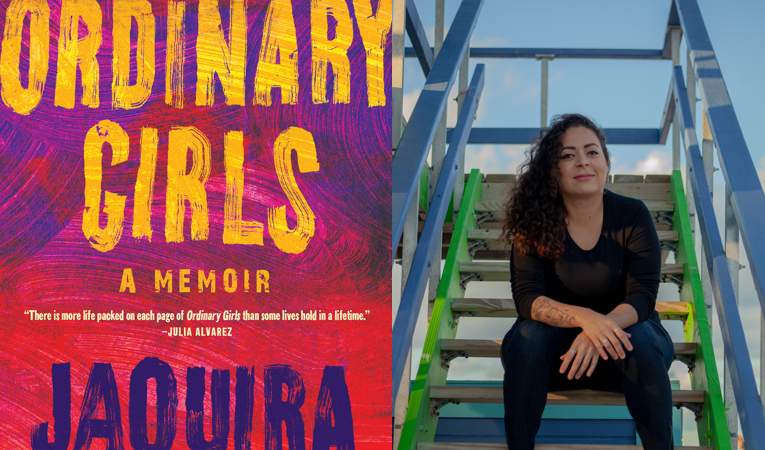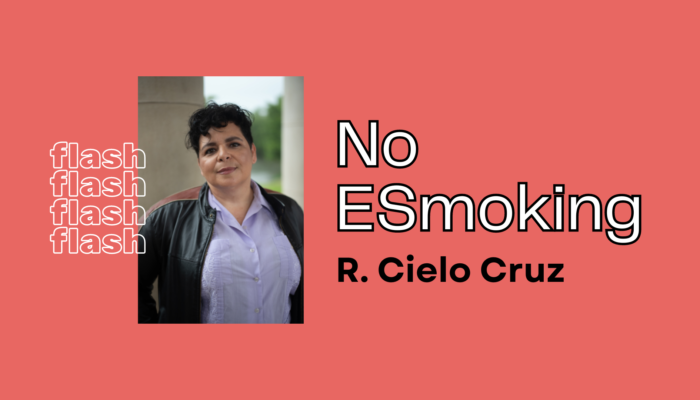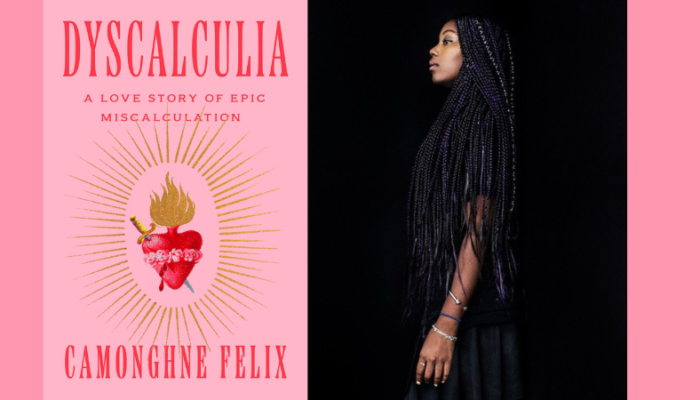An interview with Jaquira Diaz
Jaquira Diaz’s Ordinary Girls is a stunning memoir that traverses Puerto Rico to Miami, detailing a coming-of-age story told through the themes of monsters, family, and what it means to be a queer and brown woman in America. I tore through this memoir in a couple of days, drawn in by Diaz’s eloquent yet raw portrayal of her youth. Diaz unsparingly writes about immigration, violence, mental illness, drugs, sexual assaults, suicides attempts. And yet, despite the difficulty of subject matter, the strength and beauty of her prose buoys the reader on. Through four distinct parts—Madre Patria, Monstruo, Familia, and Regresando—Diaz brings the reader into her childhood, and in doing so, considers the “burden of girlhood.” Ordinary Girls, as the title suggests, considers girlhood in all its complexity, focusing on brown and black girls, the physical and sexual violence we face, the complex relationship between daughters and mothers, and what it means to be a queer girl growing up in a homophobic environment. As I read, I constantly scribbled in the margins, not wanting to forget her words. Here, an example:
“We were not allowed to talk like this, to want like this, were not supposed to feel the kind of desire you feel at thirteen, at fourteen. What kind of girl, they loved to say. What kind of girl, even as they took what we gave, took what we tried to hold on to. Our voices. Our bodies. We were trying to live, but the world was doing its best to kill us.”
I had the pleasure of speaking with Jaquira over the phone one afternoon in October, a few days before the publication of Ordinary Girls. We discussed the complexities of writing nonfiction, the research involved, Ana Maria Cardona, and the meaning of place.
—Crystal Hana Kim
Crystal Hana Kim: Congratulations on the publication of your memoir, Ordinary Girls. It’s a truly moving read. I wanted to start with the title, which feels unusual for a memoir—who are the ordinary girls you’re talking about, and how did you decide on this title?
Jaquira Diaz: The “ordinary girls” I’m talking about are many, many different girls. It started off with my group of friends. It’s how we talked about each other and other girls when I was a teenager. Early on, I wanted to be anything but ordinary. I was suicidal, and I wanted to go out in a blaze of glory, to be honest. I thought, I don’t want to do it like some ordinary girl. I wanted someone to see me. I felt like I was invisible. So my idea of “ordinary girls” were girls who were invisible, like I was. I also felt like a weird misfit who didn’t fit in my neighborhood, who didn’t fit in my own family. I think a lot of people of color, especially girls, especially girls who are bi-racial and grew up in poverty, feel like they are hyper visible and invisible at once. That’s how I felt. The idea of the “ordinary girl” first emerged for me without language. Then, I was actually able to put language to it as I looked back and thought about what it was we were even talking about when we were talking about suicide, about the kinds of girls we wanted to be.
CHK: I love how you said “the idea came first without language.” When did you know you were going to write this memoir? How long did it take for you to write?
JD: The book from beginning to end took about 12 years, but it wasn’t always a memoir.
When I first started thinking of it as a book project, it was a bunch of little, short essays. Then, I started piecing them together. Then, I got scared of actually admitting to all these things that had happened. I thought, I can’t talk about this. I can’t really admit some of these things happened. I decided to scrap the idea of nonfiction altogether and just write fiction. But the fiction didn’t feel real; it felt so dishonest. It felt in a lot of ways like I was stealing from my own life and stealing my family’s and friends’ stories. I went back to nonfiction, and it became very important to me to write about real people, and to make sure that the reader understood that the people I was writing about were real. They’re not just characters. I had a responsibility to interrogate myself and my own story and the reasons why I was even writing, and why it was important to me to write nonfiction. Ordinary Girls was then a collection of essays, and then a couple of drafts later, I decided to write it as a memoir, even if the stories were moving in a nonlinear way. It was a long and complicated process that took about 12 years.
CHK: That’s interesting because you write so honestly about all that you experienced growing up, from your first suicide attempt at age 11 to dropping out of high school, to the fraught relationships you had with your mom, sister, brother, and father. As a fiction writer, I always admire nonfiction writers’ ability to tell the truth. I was going to ask you if you were you ever hesitant to share these stories.
JD: At first, I hesitated mostly with things related to family and friends. I felt like I was telling on them, like I was spilling our secrets, and some of these things we hadn’t really talked about with each other in years. It felt in a lot of ways like I was betraying my family and community. Then, I started approaching people and telling them, I’m writing about this. Do you remember this? and talking about it with my family and friends. It was very important to me that when this book came out, I could face every single one of these people and say, I wrote about this, and be able to look them in the face and live with myself.
It was a process. There were things that didn’t make it into the book. I didn’t feel like I had a right to reveal anyone else’s secrets. I see that as a violence. I talked to people, and I gave them a choice of changing their names, and sometimes I let them choose their own names. Some chose nicknames. I tried to protect everyone’s privacy so that they wouldn’t feel like I had betrayed them.
CHK: I think you do an incredible job because you write about everyone so honestly but also with warmth and respect. I’m curious about how you decided on the book’s shape. You were referencing earlier that the book is not necessarily chronological. The memoir is broken up into four parts based on different themes. How did you decide on that structure?
JD: A lot had to do with feeling things out and seeing if pieces fit together. I started off with essays arranged thematically. Then, I cut and pasted and moved things around to try to make them chronological, but that didn’t work. I then arranged the essays in a way so that they would feel like they were moving chronologically even though the chapters themselves are separated by themes.
There was a lot of writing to fill in gaps and a lot of thinking about what’s reoccurring in each section. In the first section, it’s easier to see that all the chapters are set in Puerto Rico, so it’s obvious that this part is about a motherland. In other sections, like Monstruo, it took me awhile to figure that one out. It’s not necessarily arranged chronologically, but I was thinking about writing from a specific lens and looking at things from the perspective of a juvenile delinquent, or a girl who is in many ways perceived as monster. I thought about how there are different kinds of girlhoods and different kinds of girls who are othered. That section in particular is really about monstrosity and how girls are perceived and treated as others.
CHK: I loved that section and all of the stories about girls and the way they are seen or not. At one point, you use the term “the burden of girlhood” and I think that will resonate with so many different types of readers. While you were writing, how did you go about reconstructing your memories? Was there research involved?
JD: Yes, there were all different kinds of research. I had to go back to old journals and old stories I had written. I had a lot of conversations with friends and family members and took notes.
I also went back to some of the stories that were told again and again in my family, which I had never really forgotten, which were always there in the periphery because I come from a family of storytellers. I had a lot of conversations with my father, sister, and best friends from childhood. That was part of the research. There was also a lot of looking up historical information, like what was in the newspapers and what was happening at the time. Was it possible that things weren’t necessarily how I remembered them? I cross-referenced dates. For some reason, Halloween costumes became important because that’s how I remembered specific years. I think Halloween comes up three or four times in the book!
There were also sections that were related to Ana Maria Cardona. I read through so many trial transcripts, pages and pages of newspaper stories. I watched videos from 1991, and I flew to Miami for her third trial and sat in the courtroom and watched and listened and took notes. Research was extensive (and expensive) and I did all different kinds of research in addition to the writing.
CHK: I think that a lot of times, readers don’t realize how much research and craft goes into memoirs, so it’s always interesting for readers to consider in interviews. You mentioned Ana Maria Cardona, who shows up throughout your book – you write about how you grew up watching the “Baby Lollipops” murder on the news, how you began corresponding with her while she was in prison, and how you went to her trial in 2017. What drew you to her?
JD: Initially what drew me was that I was a kid who loved horror and monster stories and flasher movies. The story on television seemed surreal, out of this world, but had actually happened in our neighborhood. I was drawn to the story because it felt right out of a monster story; it didn’t seem real. As I got older, after her first trial, after she went to prison, I was still obsessed. I was thinking like a writer and taking notes as a 12 or 13-year-old. I was thinking about writing about this, writing monster stories in my notebooks, and dreaming of being a writer.
I didn’t really think about the news realistically. Eventually, when I got older, 20 years later, when I wrote an early essay called “Baby Lollipops” which now appears in the book as part of a chapter, “Monster Story,” I realized this is actually someone’s life. This is not a story. When I started corresponding with Ana Maria Cardona, and I said to her, “I would like to hear your story.” We were corresponding in Spanish, and she replied, “This is not a story. This is my life.” I realized that I already knew this, but I used the wrong word because I was so obsessed with story. I felt so caught, that she could tell I had been thinking about this not as I’m speaking to a human being, but I’m interested in this story. It was a moment that made me reflect and made me think about why I was even writing about this.
CHK: That’s fascinating. Now moving away from Ana Maria Cardona, I wanted to talk about you how you describe Miami and Puerto Rico’s physical spaces so vividly. I could picture your abuela’s home on top of your father’s liquor store, the beaches in Miami where you partied as a teen. I could see the crime and violence and the joy and revelry. Did you envision this book as a memoir of place as well?
JD: Not necessarily. I hadn’t thought of it as a memoir of place, it’s more that for me, place occurs naturally. I think about place before I think of story or characters. I always start with place when I’m writing nonfiction because for me, plot is always connected to place. I think about what kinds of people live in a certain place and what kinds of things go on there. I’m driven by nostalgia and time period and place—and all of that is connected. So I was thinking more about Miami as setting, rather than this being a book about Miami.
Suddenly, after several different drafts, that started to change for me. I started thinking of setting as metaphor and historical marker. Setting that can either show how people and places and communities shift or stay the same. Then, I started thinking about what kind of place was Miami and what does that mean for this book? What kind of place was El Caserío, and what does that mean for this book? After a fifth draft, and after conversations with my agent and editor, I started bringing in things that would ground readers in time period. Since my book is non-linear, readers could have signifiers that would tell them when stories were taking place, and organically that was tied to the setting.
CHK: The result is a memoir that is really vivid, where the reader knows what place and time we are in, even with the shifting timelines.
JD: Thank you. I was hoping that would come through.
CHK: It really does. I have two more questions. At Apogee, we publish and prioritize marginalized identities, people of color, and those who have not had access to mainstream publications. Many of our readers are also writers or aspiring writers. What advice do you have for them, particularly in writing nonfiction?
JD: The single most important piece of advice I can give is to read. Read everything, read like your life depends on it, read widely and diversely. Never stop reading. Never stop learning. You should be reading a lot more than you’re writing.
CHK: Yes, I love that. One last fun question. Your book is coming out on soon, on October 29. What are you most looking forward to with the publication of Ordinary Girls?
JD: I’m looking forward to sleep! No, I’m kidding. I’m very excited to talk to readers, especially young readers and young women. It was so important to me to write a book that spoke to my community, a book that spoke to girls like I was and women like I am now, women and girls who didn’t see themselves in books growing up. I’m looking forward to talking to those readers, who are seeing themselves in a book for the first time or who rarely get to see themselves as queer, brown and black women and girls in books.
CHK: It’s going to be an incredible experience. I’m so excited for you. Congratulations again.
JD: Thank you.
Jaquira Díaz was born in Puerto Rico. Her work has been published in Rolling Stone, the Guardian, Longreads, the Fader, and T: The New York Times Style Magazine, and included in The Best American Essays 2016. She is the recipient of two Pushcart Prizes, an Elizabeth George Foundation grant, and fellowships from the MacDowell Colony, the Kenyon Review, and the Wisconsin Institute for Creative Writing. She splits her time between Montréal and Miami Beach with her partner, the writer Lars Horn. Ordinary Girls is her first book.




